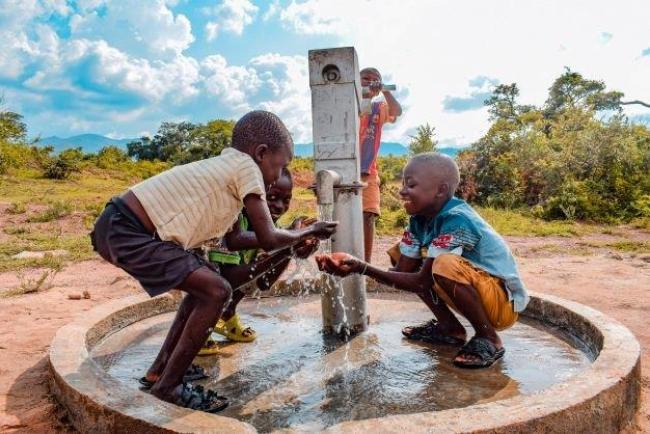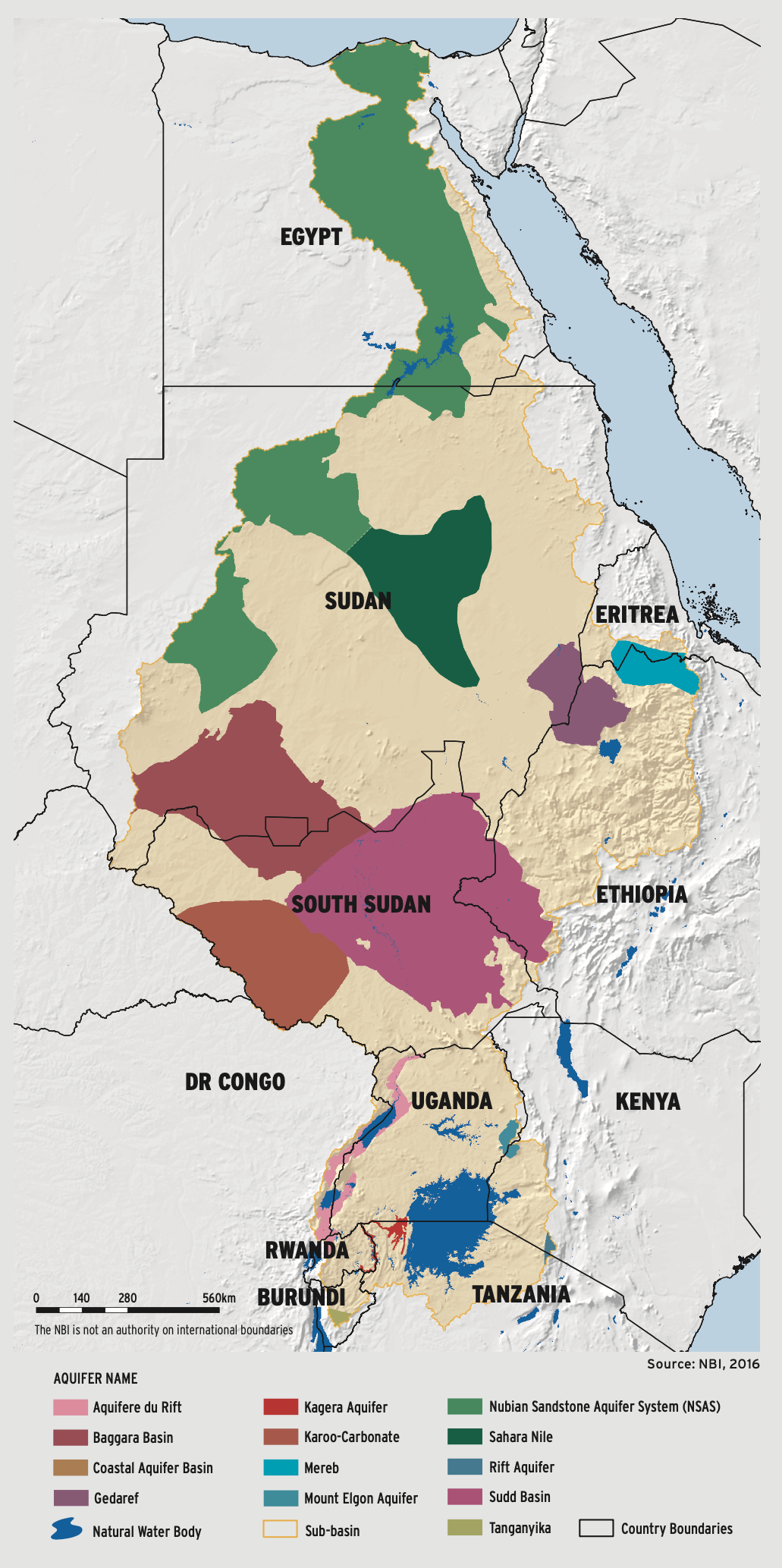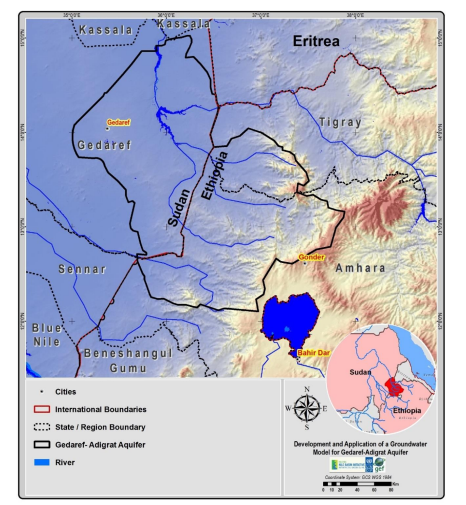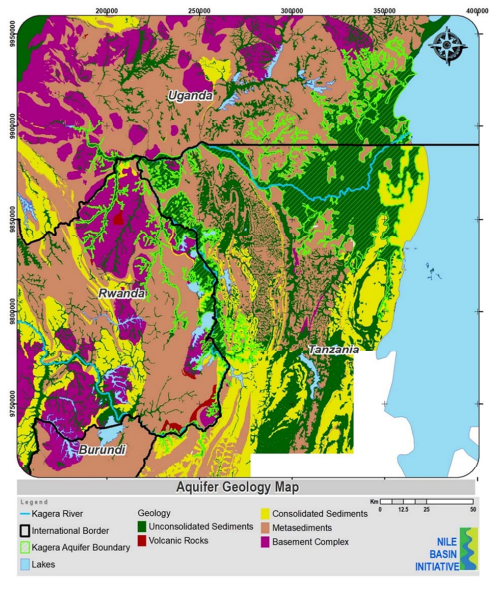
The interaction between groundwater and surface water systems (rivers, wetlands, lakes) has not been adequately considered in most trans-boundary river basin management initiatives, including the Nile Basin. Therefore, it is of vital importance to build and expand on the understanding of groundwater resources characteristics through detailed investigation, mapping, assessment, and modelling of the Nile Basin’s three selected aquifer systems (Mount Elgon, Kagera & Gedref Adegrat).
Like is the situation elsewhere, groundwater is a vital resource in the Nile Basin with about 70% of the rural population depending on it for not only domestic use but also livestock watering. There is also increasing use of groundwater for economic activities such as irrigation, mining and industries. With a rapidly growing demand for surface water, which will soon outstrip supply, groundwater holds the promise of bridging the gap between water supply and demand and in buffering the effects of climate change and variability.
To this end, NBI is implementing a five-year (2020 – 2025) project: “Enhancing conjunctive management of surface and groundwater resources in selected transboundary aquifers: Case study for selected shared groundwater bodies in the Nile Basin”.
The focus is on three shared aquifers: Kagera Aquifer, which covers Burundi, Rwanda, Tanzania and Uganda; Mt Elgon Aquifer benefits Kenya and Uganda, and Gedaref-Adigrat Aquifer for Ethiopia and Sudan.
NBI is supporting Member States to monitor groundwater, improve the knowledgebase and capacity as well as put in place cross-border mechanisms for joint management and sustainable utilisation of shared aquifers. Countries will also be supported in addressing the water related Sustainable Development Goals.
Enhance current understanding and the knowledge on the resources base, threats and options for sustainable management and utilisation of shared aquifers.
Component 1
Enhance current understanding and the knowledge on the resources base, threats and options for sustainable management and utilisation of shared aquifers.
Develop action plans on groundwater resources governance, management, and protection for inclusion in national, sub-basin frameworks: –including issues of surface water/groundwater conjunctive use.
Component 2
Develop action plans on groundwater resources governance, management, and protection for inclusion in national, sub-basin frameworks: –including issues of surface water/groundwater conjunctive use.
Target pilot projects to explore conjunctive use of surface and groundwater, and links to biodiversity conservation and climate change adaptation.
Component 3
Target pilot projects to explore conjunctive use of surface and groundwater, and links to biodiversity conservation and climate change adaptation.
Further strengthen capacity to address groundwater issues at the national and regional levels. The project will strengthen the capacity for groundwater management at both national and regional levels.
Component 4
Further strengthen capacity to address groundwater issues at the national and regional levels. The project will strengthen the capacity for groundwater management at both national and regional levels.
Communications and awareness raising about the benefits, challenges, opportunities of groundwater as well as the environmental issues and the threats of climate change on the ecosystem and biodiversity.
Component 5
Communications and awareness raising about the benefits, challenges, opportunities of groundwater as well as the environmental issues and the threats of climate change on the ecosystem and biodiversity.



